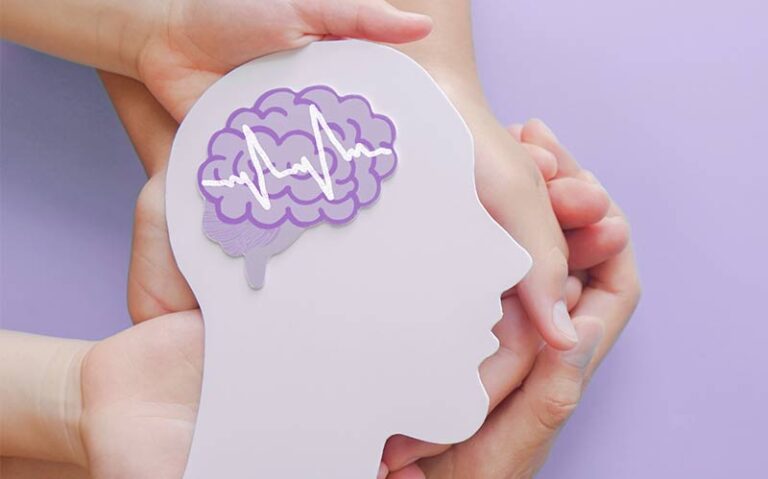Autism diagnoses have drastically increased over the last few decades. However, scientists still do not know what causes autism spectrum disorder (ASD) exactly.
Many theories and studies link certain genetic and environmental factors to autism, but none have been declared causes.
Still, knowing the factors that could potentially increase the risk of having autism is helpful. Let’s look at the potential autism causes scientists have identified. We’ll also discuss what to do when your child or loved one receives an autism diagnosis.
Exploring the Most Common Potential Factors That Causes Autism
There is no one cause of Autism Spectrum Disorder. Research shows that the cause could be genetic, biological, or environmental. It could also be a combination of different factors.
Instead of focusing solely on one main factor that causes autism, let’s look at the various risk factors involved.
Genetic Risk Factors for Autism
A parent does not have to have ASD to pass on autism to their child. Certain gene changes increase the risk of genetic autism, and a parent can be a carrier of one of these gene changes without having autism themselves. Genetic disorders like Fragile X syndrome are also linked to autism.
Additionally, there is a higher risk of ASD if you have a sibling on the spectrum. Twins and multiples also have a higher risk, and babies born less than a year apart. Low weight at birth can also increase the risk, as well as being born prematurely. Also, genetic risk factors increase if you are born to older parents.
Biological Risk Factors for Autism
Recent studies have also found that random or spontaneous gene mutations can lead to a higher risk of autism. Spontaneous gene mutations are not passed down from the parents but occur randomly in the egg or sperm during fertilization.
As the fertilized egg divides, the mutation can continue in each cell. What happens with these mutations? Research is ongoing, but it appears that the mutation can affect single genes or entire strands of DNA.
When a full strand of DNA is affected, multiple genes may be duplicated or deleted. Studies have recently found that people with autism have more duplicated genes than people without autism.
As with genetic risk factors, the spontaneously mutated genes do not seem to cause autism, but they can increase the risk factor.
Environmental Risk Factors for Autism
Research around the environmental risk factors for autism is new and ongoing. Scientists have not determined exactly what environmental factors lead to a greater risk of autism. Still, the research community does agree that there are environmental factors involved that can lead to a greater risk of having autism spectrum disorder.
The current findings point to the following environmental factors during pregnancy:
- Taking certain prescription drugs, like valproic acid and thalidomide
- Exposure to heavy metals
- Exposure to environmental toxins and chemicals
Again, the research on environmental risk factors is new, so there is some controversy around it. However, more studies show that exposure to the chemicals in our conventional cleaning and personal care products can affect a child in the womb more than adults. Some studies link exposure to those chemicals to brain development.
Hopefully, as scientific research continues, there will be more clear answers about the genetic, biological, and environmental factors that could lead to a greater risk of autism spectrum disorder.
Myths About Autism Causes
One 1998 study explored a potential link between childhood vaccines and autism spectrum disorder. However, several later studies found no evidence of a link between vaccines and ASD. The original study scientists even retracted the statement about vaccines in 2010. Vaccines to prevent childhood infectious diseases have proven not only to be safe but also have been conclusively shown not to be a factor that causes autism.
Receiving an Autism Diagnosis
Since autism causes are still undetermined, how is autism spectrum disorder diagnosed? Several common autism symptoms can lead to a diagnosis. Symptoms can present themselves in toddlers as young as 18 months old.
Early signs of autism spectrum disorder include:
- Not responding to one’s name
- No babbling or baby talk
- Inability to put two-word sentences together by age two
- Little or no eye contact
- Lack of pointing
- Poor social awareness or responsiveness
- Signs of obsessive-compulsive disorder, like constantly lining up toys
Early signs can be difficult to detect, so it’s important to keep up with developmental checkups. A doctor can look for signs of autism as early as an 18-month checkup.
As a child gets older, the signs of autism become more apparent. Those symptoms include:
- Difficulty or disinterest in making friends
- Inflexibility with routines
- Repetitive language
- Difficulty holding conversations with others
- Intense focus on an object or topic
If you notice these signs in your child, you should consult your doctor to do an evaluation. After that, the next step is a full evaluation that includes a medical specialist, such as a psychiatrist, neurologist, or psychologist.
A full autism evaluation tests language and cognitive skills and includes a neurological assessment. A DNA test to look for genetic mutations is also done. A hearing test may also be done for children who have not developed speech yet.
The evaluation process is long and intense, but when you finally have a diagnosis, you can move on to treatment and help your child or loved one move forward.
Let’s explore treatment options, including Applied Behavior Analysis therapy, next.
Autism Treatment Options
Autism does not have a cure, but education and behavioral interventions can help lessen the intensity of symptoms. This approach is best suited for children still developing social and language skills.
Behavioral aids, educators, and therapists focus on people’s skills to influence their behavior. Applied Behavior Analysis, or ABA therapy, is an evidence-based treatment that helps autistic children, teens, and adults. It focuses on the following:
- Learning critical life skills
- Alternatives to unwanted behavior
- Building up inherent strengths
- Developing social and communication skills
At ABA Centers of America, activities used in treatment for children can include playing, getting dressed, sitting, communication skills, attention and focus training, potty training, self-care, and much more.
For toddlers and pre-k kids, we work on preparing them to start school and be successful. Our after-school programs offer high-quality treatment and training for older children during their formative years.
ABA Centers of America offers parent training for parents of kids with autism and therapy options for adults with autism.
Applied Behavior Analysis therapy is a comprehensive treatment but is also a great complement to other types of autism therapy, such as occupational therapy.
The best part about ABA therapy is that it is not a one-size-fits-all treatment. Everyone with autism has different strengths and struggles, so our treatment is customized to an individual patient’s needs.
Medical Treatment
No medication cures autism spectrum disorder; however, some options can reduce symptoms. For example, many people with autism struggle with anxiety, obsessive-compulsive disorder, attention deficit disorder, and depression. A doctor can prescribe medication to treat these issues, making life much easier for people with autism and their caregivers. Before starting any medication, consult a skilled doctor.
Who Is More Likely to Get an Autism Diagnosis?
Autism impacts people from all socioeconomic, racial, and ethnic groups. However, it appears to be more common in males than females. Why is this the case? The reason is unclear, but some researchers believe that young boys are diagnosed more often because young girls learn to mask their symptoms and are better at mimicking social behavior.
Learn More About Applied Behavior Analysis Therapy
If a family member has been diagnosed with autism, it can be frustrating not to know what causes autism. However, that doesn’t mean autistic people can’t get the help and support they need.
When it comes to treatment options, early intervention is the best path to success for autistic children. Evaluate your child for signs of autism early and always attend important checkups. Communicate any signs you see to your doctor so they can determine if a full evaluation is necessary.
Once the evaluation and diagnosis are complete, you can begin exploring treatment options. Applied Behavior Analysis is a customizable, evidence-based treatment for autism that focuses on each client’s innate skills and strengths.
Contact us for a free consultation about ABA therapy at our treatment centers or our in-home services in New Hampshire and Massachusetts.







